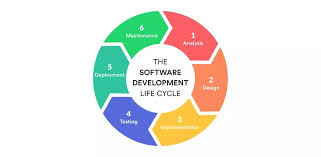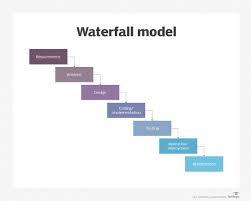The Agile Development Model
The Agile development model is a software development approach that emphasizes flexibility, collaboration, and continuous improvement throughout the development process. Unlike traditional waterfall methods, Agile focuses on delivering working software in small, incremental iterations.
One of the key principles of the Agile model is the ability to adapt to changing requirements and priorities. This is achieved through regular communication and feedback between developers, stakeholders, and customers. By breaking down projects into smaller tasks or user stories, teams can quickly respond to changes and deliver value more efficiently.
Another important aspect of Agile is the concept of self-organizing teams. Team members are encouraged to work together closely, share expertise, and take ownership of their work. This fosters a sense of collaboration and empowerment that leads to higher productivity and better outcomes.
Scrum and Kanban are two popular frameworks within the Agile model that help teams organize their work and track progress. Scrum divides work into time-boxed iterations called sprints, while Kanban visualizes workflow on a board with columns representing different stages of development.
In conclusion, the Agile development model offers a more flexible and adaptive approach to software development compared to traditional methods. By promoting collaboration, communication, and continuous improvement, Agile enables teams to deliver high-quality software that meets customer needs effectively.
7 Essential Tips for Mastering the Agile Development Model
- Break down projects into small, manageable tasks called user stories.
- Prioritize tasks based on customer feedback and business value.
- Embrace change throughout the development process.
- Hold regular meetings such as daily stand-ups to track progress and address issues.
- Encourage collaboration among team members and stakeholders.
- Deliver working software in short iterations known as sprints.
- Reflect on the team’s performance after each sprint to improve processes continuously.
Break down projects into small, manageable tasks called user stories.
In the Agile development model, a valuable tip is to break down projects into small, manageable tasks known as user stories. By dividing the work into these bite-sized pieces, teams can focus on delivering specific functionality in each iteration. This approach not only helps in better planning and estimation but also allows for more flexibility and adaptability to changing requirements. User stories enable developers to prioritize tasks effectively and ensure that each increment adds value to the project, ultimately leading to a more efficient and successful development process.
Prioritize tasks based on customer feedback and business value.
In the Agile development model, it is crucial to prioritize tasks based on customer feedback and business value. By focusing on what is most important to the end-users and aligning development efforts with the overall business goals, teams can ensure that they are delivering value with each iteration. This approach helps teams stay responsive to changing requirements and ensures that the features being developed are meeting the needs of both customers and the business. Prioritizing tasks in this way also helps teams maximize their resources and deliver impactful results efficiently.
Embrace change throughout the development process.
In the Agile development model, it is crucial to embrace change throughout the development process. By remaining open to new ideas, feedback, and evolving requirements, teams can adapt quickly and effectively to deliver value to customers. Embracing change fosters innovation, encourages continuous improvement, and ensures that the final product meets the needs of stakeholders. It allows teams to respond promptly to shifting priorities and market demands, ultimately leading to a more successful and customer-focused development process.
Hold regular meetings such as daily stand-ups to track progress and address issues.
In the Agile development model, holding regular meetings such as daily stand-ups is a crucial practice to track progress and address issues effectively. These short, focused meetings provide team members with an opportunity to discuss what they have accomplished since the last meeting, what they plan to work on next, and any obstacles they are facing. By maintaining open communication and transparency through daily stand-ups, teams can stay aligned, identify potential roadblocks early on, and make necessary adjustments to ensure project success.
Encourage collaboration among team members and stakeholders.
Encouraging collaboration among team members and stakeholders is a fundamental aspect of the Agile development model. By fostering open communication and teamwork, teams can leverage diverse perspectives and expertise to drive innovation and problem-solving. This collaborative approach not only enhances productivity but also ensures that everyone involved is aligned towards achieving common goals and delivering value to customers efficiently. Effective collaboration within an Agile environment leads to stronger relationships, improved decision-making, and ultimately, successful project outcomes.
Deliver working software in short iterations known as sprints.
In the Agile development model, it is essential to deliver working software in short iterations known as sprints. By breaking down the project into manageable chunks and focusing on completing specific tasks within a set timeframe, teams can quickly respond to feedback and adapt to changing requirements. This iterative approach not only ensures that progress is made consistently but also allows for regular inspection and adaptation, leading to more efficient development and higher-quality software delivery.
Reflect on the team’s performance after each sprint to improve processes continuously.
In the Agile development model, it is essential to reflect on the team’s performance after each sprint to improve processes continuously. By taking the time to review what went well and what could be done better, teams can identify areas for improvement and make adjustments for future sprints. This reflective practice not only helps teams learn from their experiences but also fosters a culture of continuous improvement, leading to more efficient and effective development processes over time.




